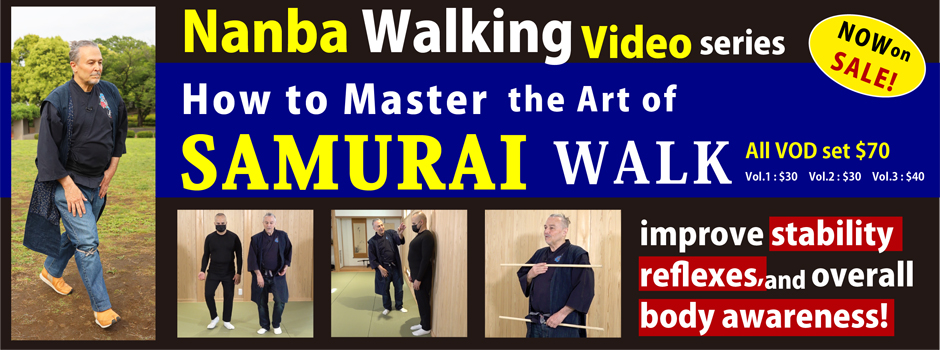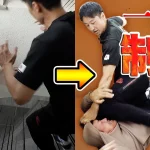How to Master the Art of SAMURAI WALK Vol.6 【Nanba Footwear: the Art of Mindful Walking】
Here we demonstrate the concept of Nanba footwear, specifically tabi and Ashinaka. Tabi are split-toe shoes that separate the big toe from the other toes, allowing for better grip and engagement of the muscles in the feet and legs. Ashinaka is a modified version of Tabi that lifts the heels off the ground, further strengthening the arch of the foot and promoting constant grip on the ground. We emphasize the importance of gripping the ground with the feet and strengthening the arch to improve posture and stability. I also encourage you to practice Nanba walking, which involves gripping the ground with the toes and maintaining a centered and stable walking style. We conclude by highlighting the benefits of Nanba and the importance of incorporating its principles into daily life.
Walking in Tabi
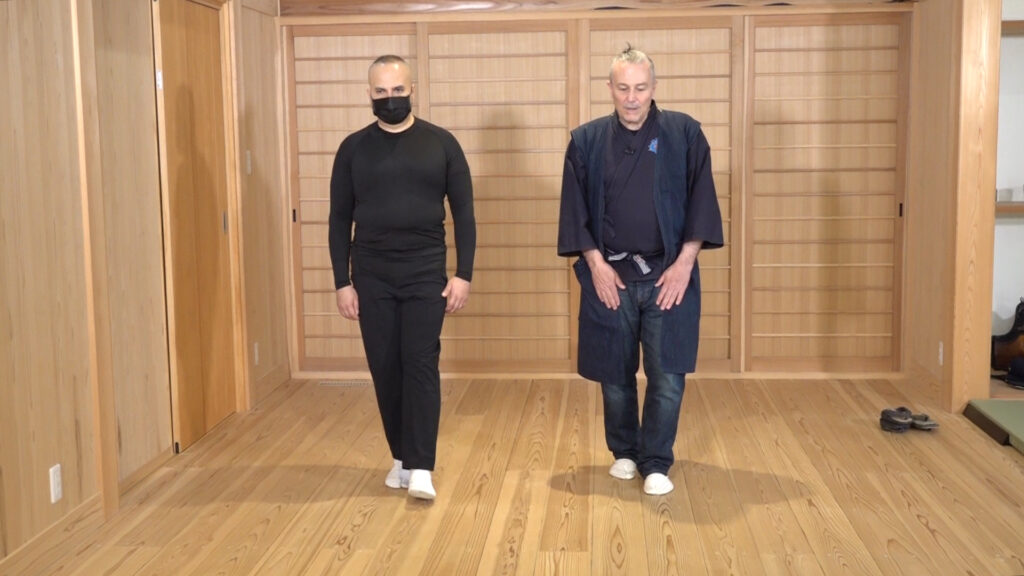 There are two kinds of footwear that are appropriate for indoor use which also help develop the arch of the foot for Nanba Walking. The first is Tami, which is a split-toed soft shoe with a thick sole. This is used by martial artists in practice, and in Tea Ceremony and in the Noh Theater.. It has two advantages: it helps you comfortably glide your feet on the floor and it helps articulate the gripping action of the big toes.
There are two kinds of footwear that are appropriate for indoor use which also help develop the arch of the foot for Nanba Walking. The first is Tami, which is a split-toed soft shoe with a thick sole. This is used by martial artists in practice, and in Tea Ceremony and in the Noh Theater.. It has two advantages: it helps you comfortably glide your feet on the floor and it helps articulate the gripping action of the big toes.
These can be purchased online, in either white or navy blue colors, and are sometimes called Budo Tabi. They should be worn indoors or on the mat, but are not designed for outdoor wear.
Walking in Ashinaka
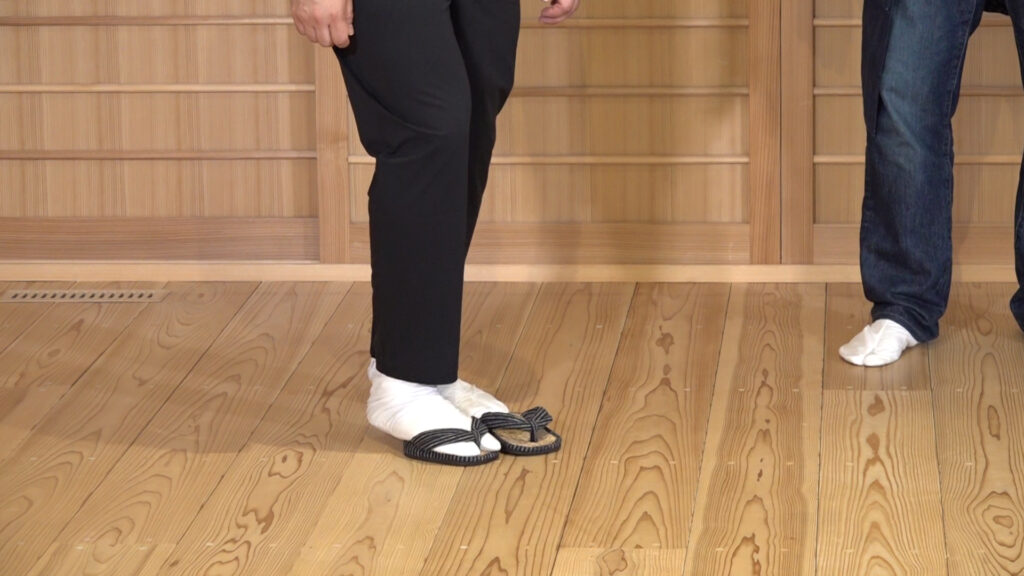 The Ashi Naka is a half length Zori sandal, which is designed to help you achieve the Washi-Tsukami, or Eagle Claw grip with the foot. Because the heel has no support, your weight naturally transfers to the front of the foot, which also helps develop the calf muscles. This is one reason that this footwear was favored by Oda Nobunaga and his foot soldier Samurai, as it developed Core strength and leg strength.
The Ashi Naka is a half length Zori sandal, which is designed to help you achieve the Washi-Tsukami, or Eagle Claw grip with the foot. Because the heel has no support, your weight naturally transfers to the front of the foot, which also helps develop the calf muscles. This is one reason that this footwear was favored by Oda Nobunaga and his foot soldier Samurai, as it developed Core strength and leg strength.
These can be purchased online, and are excellent for either indoor or outdoor use, but only one or the other.
Nanba: the Art of Physical Finesse
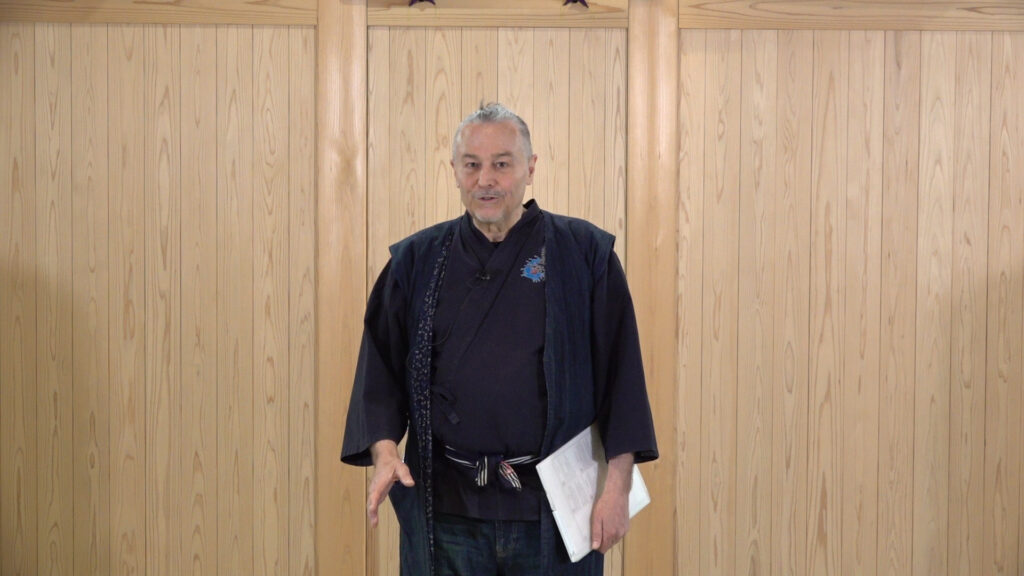 Here we provide a comprehensive recap of the various aspects of Nanba that have been discussed in a series of introductory videos. We begins by discussing the power of habit and how Nanba can be used to lessen its control over us. We explored techniques such as Nanba walking, Balance techniques, Nanba flow movements, Nanba Assist, Nanba Accessories, and Nanba Footwear. I emphasize the importance of addressing habits and finding balance in the body. This series on Nanba will continue with the release of the next series.
Here we provide a comprehensive recap of the various aspects of Nanba that have been discussed in a series of introductory videos. We begins by discussing the power of habit and how Nanba can be used to lessen its control over us. We explored techniques such as Nanba walking, Balance techniques, Nanba flow movements, Nanba Assist, Nanba Accessories, and Nanba Footwear. I emphasize the importance of addressing habits and finding balance in the body. This series on Nanba will continue with the release of the next series.
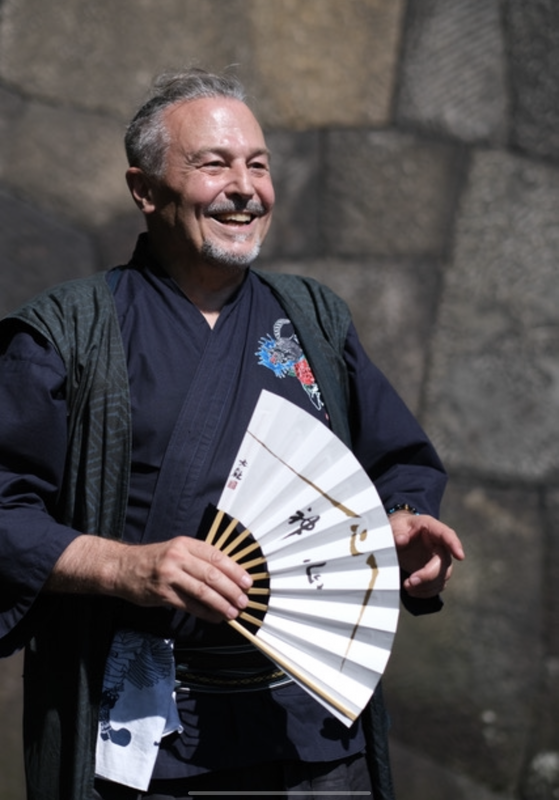 William Reed
William Reed
Born in the United States, William Reed is a long-time resident of Japan, and is currently a Professor of Japanese Culture at the International College of Liberal Arts (iCLA) at Yamanashi Gakuin University. He holds a 10th-dan in Shodo from the Zen Nihon Shodo Rengokai, and is a Headquarters appointed Vice Chairman of the Japan Calligraphy Education Association. He holds an 8th-dan in Aikido from the Aikido Yuishinkai. He holds a Tokubetsu Shihan rank in Nanba, the Art of Physical Finesse. He is aiso Certifed as a shihan in WAGI, a health method based on traditional japanese Kyogen theater, shown to extend years of a healthy lifespan. Director of the International Committee for the Mugairyu Hogyokukai (2nd-dan). A regular commentator on Yamanashi Broadcast Television Tetete TV, Navigator for NHK World Journeys in Japan, numerous documentaries, and has appeared on the long running Sekai Fushigi Hakken (Discover the World’s Mysteries). Certified in 2009 by World Champion of Public Speaking Craig Valentine, he has written a bestseller on this in Japanese 世界最高のプレゼン術 (Kadokawa Books, 2014). He is also author of Song of the Brush Dance of the Ink (Morgan James Publishing, 2022). He appears in the bestselling DVD on Nanba Walking 本当のナンバ歩き, and the DVD on Introduction to Mugairyu Iaido, both published by BAB Japan.
Samurai Walk: Mastery of Sword and Letters:
http://www.samurai-walk.com

